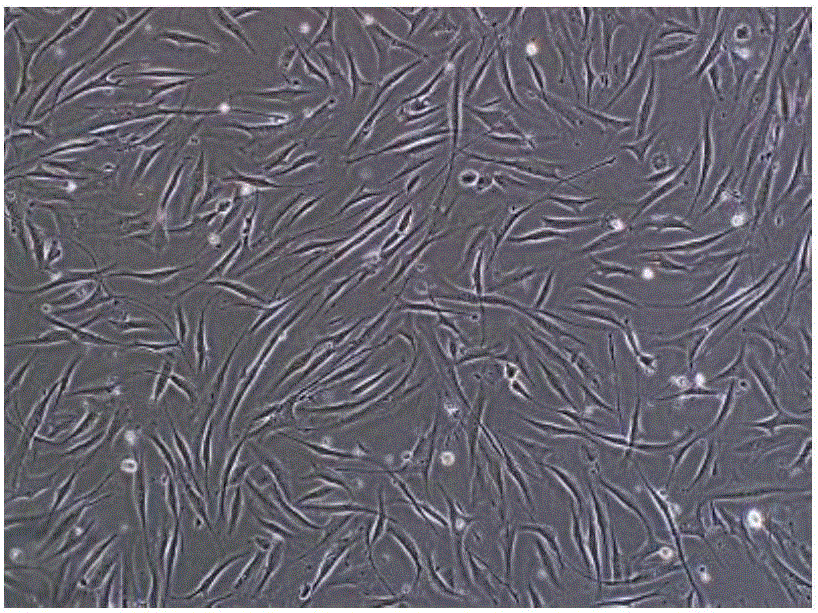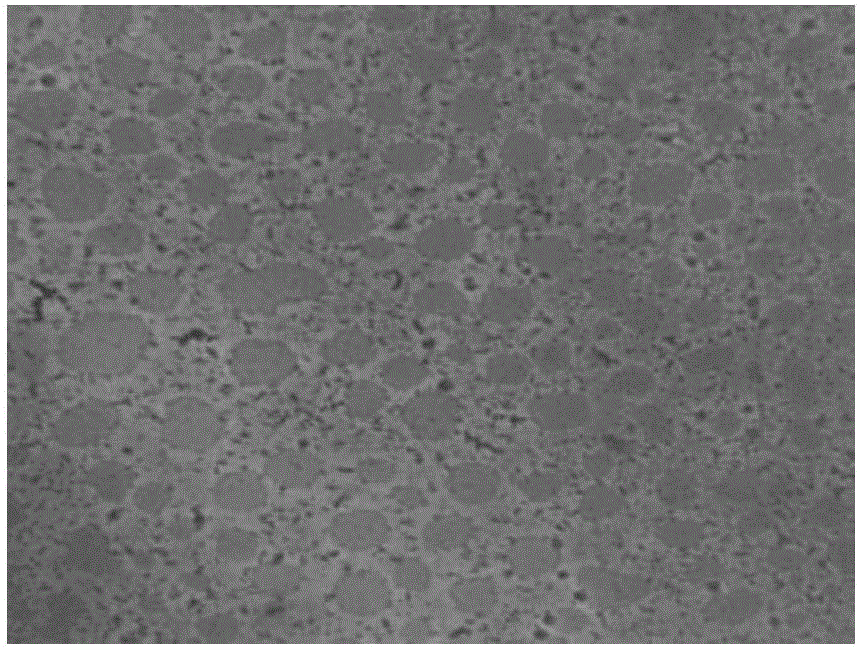Composition and application thereof
A composition and drug technology, applied in the field of cells, can solve problems such as the unclear understanding of heterogeneous cell proliferation, differentiation, and changes in lifespan immune regulation functions, so as to shorten tissue adaptability, avoid differentiation uncertainty, and prepare Easy to prepare
- Summary
- Abstract
- Description
- Claims
- Application Information
AI Technical Summary
Problems solved by technology
Method used
Image
Examples
Embodiment 1
[0076] Primary culture of umbilical cord stem cells (or purchased from the market):
[0077] Take the umbilical cord of a healthy full-term caesarean section baby, clean it aseptically in an ultra-clean bench, peel off the umbilical cord amniotic membrane and arteries and veins, take out Wharton’s glue, cut it into pieces with surgical scissors, resuspend it with DMEM+10% FBS complete medium and inoculate to a 15cm dish, transfer to 5% CO 2 , cultivated in an environment of 37 degrees Celsius.
[0078] Replenish after 5 days until the cells climb out, discard the tissue pieces, supplement with new complete medium and continue to culture, when the cells form larger clones, they can be passaged
[0079] Subculture of umbilical cord stem cells:
[0080] ① Take subcultured P0 cells, discard the original culture medium in the dish, add 10mL PBS buffer solution to gently wash the cell growth surface, and discard the washing solution.
[0081] ②Add 2mL of 0.25% trypsin, shake the ...
Embodiment 2
[0092] The preparation of embodiment 2 compositions:
[0093] ① Take out exosomes from -20°C, dissolve them in an environment of 4°C, and mix according to the composition: exosomes + normal saline. Mix well and store at 4°C for later use. The content of exosomes is 5×10 7 The total amount of exosomes extracted from cells.
[0094] ②Resuspend the hepatic cells with the preparation of exosomes, mix well and store in an environment at 4°C for later use. The content of hepatoid cells was 1×10 6 cells.
[0095] Preparation specific steps:
[0096] ①Add 100 μL 5×10 7 The total amount of exosomes extracted from cells.
[0097] ②Resuspend 1×10 exosome suspension 6 cells of hepatic-like cells.
[0098] ③ Add physiological saline to a final volume of 5 mL.
Embodiment 3
[0100] ① Take out exosomes from -20°C, dissolve them in an environment of 4°C, and mix according to the composition: exosomes + normal saline. Mix well and store at 4°C for later use. The content of exosomes is 1×10 7 The total amount of exosomes extracted from cells.
[0101] ②Resuspend the hepatic cells with the preparation of exosomes, mix well and store in an environment at 4°C for later use. The content of hepatoid cells was 5×10 6 cells.
[0102] Preparation specific steps:
[0103] ① Add volume of 100μL 1×10 7 The total amount of exosomes extracted from cells.
[0104] ②Resuspended with exosome suspension 5×10 6 cells of hepatic-like cells.
[0105] ③ Add physiological saline to a final volume of 5 mL.
PUM
 Login to View More
Login to View More Abstract
Description
Claims
Application Information
 Login to View More
Login to View More - R&D
- Intellectual Property
- Life Sciences
- Materials
- Tech Scout
- Unparalleled Data Quality
- Higher Quality Content
- 60% Fewer Hallucinations
Browse by: Latest US Patents, China's latest patents, Technical Efficacy Thesaurus, Application Domain, Technology Topic, Popular Technical Reports.
© 2025 PatSnap. All rights reserved.Legal|Privacy policy|Modern Slavery Act Transparency Statement|Sitemap|About US| Contact US: help@patsnap.com



